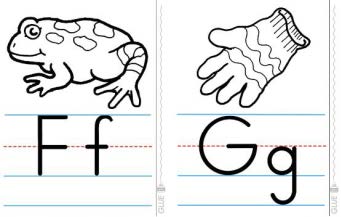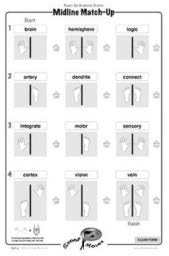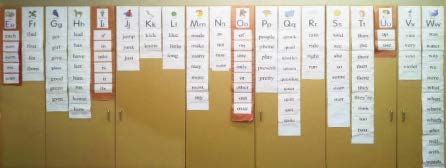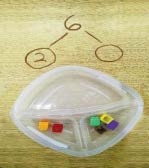The International Dyslexia Association (IDA) suggests that as many as 15% to 20% of the general population could have some degree of dyslexia (2017). Dyslexia, a language-based learning disability that is characterized by difficulties with word recognition, spelling, and decoding due to a weakness in the phonological components of language, often significantly impacts reading comprehension, vocabulary growth, and academic achievement across the curriculum.
Reading is foundational to all academics and many social circumstances. In recent years, a growing awareness of individuals identified with dyslexia has increased our understanding of how to teach students who are confronted with learning to read in a different manner than students without a reading disability. In addition to requiring the reading methodologies recommended by the National Reading Panel's research evidence to include instruction in "The Big Five" interrelated skills critical to reading success—phonemic awareness, phonics, fluency, vocabulary, and comprehension (National Institute for Literacy)—students identified with dyslexia share common characteristics related to their learning profile, which require a specific and specialized scope of teaching. Assembly Bill (AB) 1369's call for educational service to address dyslexia concerns include the recommended teaching elements through multisensory, evidence-based, structured, sequential, explicit, and direct instruction.
As legislative updates have supported an increase in identified students with dyslexia, it is becoming more likely that teachers across our nation will become responsible for ensuring learning occurs for students with the unique learning profile relative to dyslexia. Moreover, since dyslexia manifests along a continuum of levels, from mild to severe, students identified with dyslexia are appropriately supported through an array of learning environments. Connected to appropriate services and eligibility are considerations by the Individualized Education Plan (IEP) team to include collaborative partnership with related service providers, such as Speech/Language Pathologists, Occupational Therapists, and Counselors. Communication and collaboration between all service providers, both special and general education, is neces sary to provide intensive interventions needed by students with pervasive reading disabilities to access and attain the ability to read and learn within the walls of the classroom. Connection and communication between education professionals and families is a critical bridge to encourage and provide for generalization and increase of skills in the making. The following serves to guide teachers, related service providers and parents in addressing the critical elements recommended, in order to provide a specialized educational approach for students whose journey on the path to reading requires an alternate route.
In order to integrate a specialized academic focus to learners with dyslexia and other reading differences, it is essential to understand and integrate the six strategies noted in this article to increase support, understanding, and communication that is essential to a collaborative team of educational caregivers.

MAKING THE CONNECTION: In recent years, a growing awareness of individuals identified with dyslexia has increased our understanding of how to teach students who are confronted with learning to read in a different manner than students without a reading disability.
MULTI-SENSORY
Although multi-sensory techniques have been discovered to be effective for all learners, this technique is particularly effective for students with dyslexia. Although multi-sensory techniques have been discovered to be effective for all learners, this technique is particularly effective for students with dyslexia. This instruction involves all of our senses, with a focus on visual, auditory, kinesthetic, and tactile elements.
When integrating various senses into the learning process, memory is enhanced and engagement is encouraged. It is when the learner begins to engage in multi-sensory experiences, that he or she can become aware of, or more in tune with, their own strengths with learning strategies; thereby beginning the journey toward life-long learning, both academically and emotionally. Educational caregivers are wise to watch for the cues that students provide us, as they journey through the experiences presented through a combination of learning channels. The short descriptions below provide a glance at the techniques that fall under the umbrella of multisensory learning strands.
• Visual: The use of vision in teaching is a traditional approach, but goes beyond relying solely upon the activity of reading text. Visual learning occurs with the application of visual maps to include-timelines, flow charts, digital or print captions, graphs, posters, video, and more.
• Auditory Techniques: The use of listening is another traditional approach to teaching and learning, but listening to the teacher talk is only the beginning of this strategy. Use of music, singing, rhymes, lyrics, tapping, clapping, and discus sion are some ways in which the ear is involved in the activity of learning.
• Kinesthetic: If you have ever referred to yourself as someone who learns by doing, then you are indicating a strength as a kinesthetic learning. Kinesthetic learning is performed through motion, using fine and gross motor skills. Air writing, using hand gestures or body motion cues to learn the alphabet, jumping on a number line for subtraction and addition, the act writing or drawing are a few examples of learning through movement.
• Tactile: Individuals who tend to touch fabrics or other items, for example, as they wander through the aisles of the department store, are learning and gaining information through the tactile channel of touch. Through the fine motor activities of using letter tiles to spell words, count coins, write letters in the sand, putting together puzzles, building with clay, etc. are utilizing the tactile technique.
EVIDENCED-BASED
This is a type of intervention that has been proven effective through actual clinical trials. Oftentimes, the clinical trials are an outcome of the theoretic support referred to as research-based. (Yale Center). Evidence-based practice (EBP) are strategies grounded in research that can be learned and implemented. According to the Yale Center for Dyslexia and Creativity department, the ideal reading instruction provided to a student with dyslexia "…should be evidence-based, systematic, and delivered in a small group setting."
STRUCTURED
When providing structured literacy instruction, the distinctive principles of the targeted learning guides the lesson. The organization of the material presented will follow a logical order, relative to language rules. Additionally, lessons will be cumulative and each step will be based upon concepts previously learned. When providing learning from the perspective of structured literacy, concepts are taught deliberately and explicitly. Nothing is thrown to the chance that the learner implicitly knows or understands a concept. For example, just because a student knows his/her alphabet, it is not implied that they know the difference between the role of a consonant and the role of a vowel. Meeting the needs of an individual student is an essential element within the structure, in order to ensure the student masters the material to a degree of automaticity.
SEQUENTIAL
SEQUENTIAL When following the principles of structured literacy instruction, sequential literacy instruction occurs, as the organization of material will follow the logical order of the language. The sequence will begin with the easiest and most basic concepts and elements and progress methodically to increasingly more rigorous concepts and elements, with each step building upon previous learning.
EXPLICIT
Deliberate teaching of all concepts with continuous studentteacher interaction ensures that no assumptions will be made for the learner to deduce or imply concepts on their own. This element is enfolded within the constructs of structured literacy instruction. Within the explicit strategies, instructional routines allow students to focus upon content through a shift away from question-based instruction that often includes additional language demands surrounding the content. Routines are built into presentation and interaction of teacher and learner through learned routines such as:
-"My turn" where teacher models.
-"Do together" where learners and teacher do together.
-"Your turn" where learner performs independently.
This routine inclusive response pattern provides from instruction to remain on target skills, active engagement, a steady pace, and lots of practice and repetition. Such an approach increases engagement and fun, as well was minimum transition.
TOOLS OF THE TRADE | FOR SPECIALIZED METHODS OF INSTRUCTION
The more that is learned about how to reach and teach students with dyslexia to overcome the hurdles of their neurobiological difference in learning to read, the less overwhelming the situation will become. Included are some examples of simple, but effective scaffolds and structures that can be systematically implemented within an evidence-based and structured program tailored to learners who require specialized methods of instruction.
This 15-foot Coloring-Book Style Alphabet Banner from superteacherworksheets.com, is differentiated to create an A,B,C book for kindergarten and first grade students who were identified with dyslexia. Dot the letters with liquid glue and have student trace the letter and say the sound or the letter name for a multi-sensory learning experience that spans sound, sight, and touch.

Visual scaffolds, such as the teacher-made template pictured here, support students' visual modality, as they complete the map. Additionally, as students move through the article that they are summarizing, the act of highlighting the ideas and transferring information to the map, engages their movement and fine motor modalities. Finally, listening to the verbal prompts provided supports their auditory modality. Once the template is complete, the load put on working memory and executive function is relieved and allows the student to transfer the information into a nicely presented paragraph. As one 3rd grade girl identified with a reading disability aptly expressed, "I love this. I couldn't put down my thoughts this well without this tool."

This activity from S'cool moves, integrates movement, vision, and auditory components, to scaffold and overlearn some consonant, vowel, consonant words from an explicitly taught, structured, and sequential reading program, not related to S'cool Moves. This movement-based program, includes the visual components of interactive posters and incorporates auditory learning with movement. S'cool Moves is the collaborative effort of a reading specialist and an occupational therapist. The program is built upon research from the fields of brain science, OT, PT, mind-body science, behavioral optometry, and best practices (schoolmoves.com ). Strategies used within the S'cool Moves program qualify as evidence-based practices (Wilson). S'cool moves meshes perfectly with multi-sensory practices, which encourages and focuses upon teaching through doing rather than just telling. Check out the website to learn more about this innovative manner of blending the health and educational models to create an engaging, multi-sensory learning experience that can be fused into a structured reading program, across a vast array of skills and grade levels.

DIRECT INSTRUCTION (DI)
Through DI, inferential learning of any concept is not taken for granted (ldonline.org). The explicit teaching of a skill-set, using lectures and demonstrations of the material provides for an explicit, systematic instructional system based upon scripted lesson plans. Efficiency and pace of instruction are emphasized because of the purposeful acceleration of student progress, which DI programs are designed to provide. Oftentimes, professional development and coaching are provided to ensure that a high fidelity of implementation occurs.
Difficulty learning to read can be overwhelming and emotional for students and their parents. Families and educators often ask how they can help the student with dyslexia transform into a reader. In order to integrate a specialized academic focus to learners with dyslexia and other reading differences, it is essential to understand and integrate the six strategies noted above to increase support, understanding, and communication that is essential to a collaborative team of educational caregivers. •
ABOUT THE AUTHOR: Angela Shaw is a special educator in So. California. She synthesizes her diverse education and experience to provide students learning that will grow for a lifetime. Her focus is upon special topics to include articles: "Simple 'Life Hacks' for Students with Dyslexia" (November, 2107, Exceptional Parent Magazine) and "Seven Things Every Child with Dyslexia Wishes You Knew" (March 2017, Exceptional Parent Magazine). Shaw earned her Masters' Degrees in Special Education and School Counseling from Azusa Pacific University.
A word on Word Walls. In order to create effective Word Walls, they need to be explicitly and systematically taught. Additionally, they should be interactive and engaging. Word wall activities, as suggested by Reading Rockets, engage students from explaining key vocabulary to spelling words. Word wall activities engage students while they learn key vocabulary, whether it be learning to explain a word, to compare it to other key concepts, or to spell it. The one pictured, supports the reader in understanding and locating vowels through the use of red construction paper.
Additionally, its purpose is to support students toward becoming independent writers through guiding students to discover similarities amongst words. For example, if a student is not sure how to spell the word cake, the teacher may guide him to discover the word make and change the beginning to /c/ or the letter "C". Additionally, the voiced sound /th/ and unvoiced sound of /th/ can be discovered and studied using the words on the wall. If a student writes the word camp as cap, help him or her discover that the nasal sound of /m/ appears in the word jump. Getting up close and personal with the word wall is important. There are many walls that you can build, to support vocabulary, literature, spelling, and so on. Check out readingrockets.org for some more great ideas on word walls.

This work mat presents a vast number of learning routines for multi-modal activities. Blending sounds into words is the initial topic of the visual support map. Tap out the sounds, starting with green, slowing in the middle at the yellow to hear the sound clearly, say the last sound at the end. Have the student do the tapping activity 2 or more times, before putting his or her finger on the "road" for blending into a word. The arrow does more than provide a visual to remind students of the left to right progression of the word. Place the work mat into a page protector and the student can transition into writing the presented word within the arrow lines using a dry erase pen. For those students who have working memory needs, have them place letter tiles in the tapping sections when it is time for the writing/spelling activity. Remember to create and present this activity in a structured and sequential manner, with the sequence beginning at the easiest and most basic concept and building logically to an increased rigor. Direct Instruction methodology of "I do", "We do", "You do", will guide students to lessen the language load that purely verbal instructions sometimes present. Another great DI structure is to add the verbal prompts recommended by ottoolbox.com , such as "start the tall letters in the sky" or reminding the student "tail letters hang down underground."

Students with dyslexia can excel at math, but may require supports and strategies to address common math struggles that accompany dyslexia with regard to the language load of math (Woodin). Today's primary students begin conceptual and language-based mathematics practice, as they are introduced to the numeracy of addition and subtraction. The number bond is a paper-pencil based worksheet that can be broke down into multi-modal areas of seeing, hearing, and touching. Lots of practice at the table with a divided dish, cubes, and an equation, scaffolds and promotes overlearning, to support our students with dyslexia access conceptual applications of math beyond word problems.
